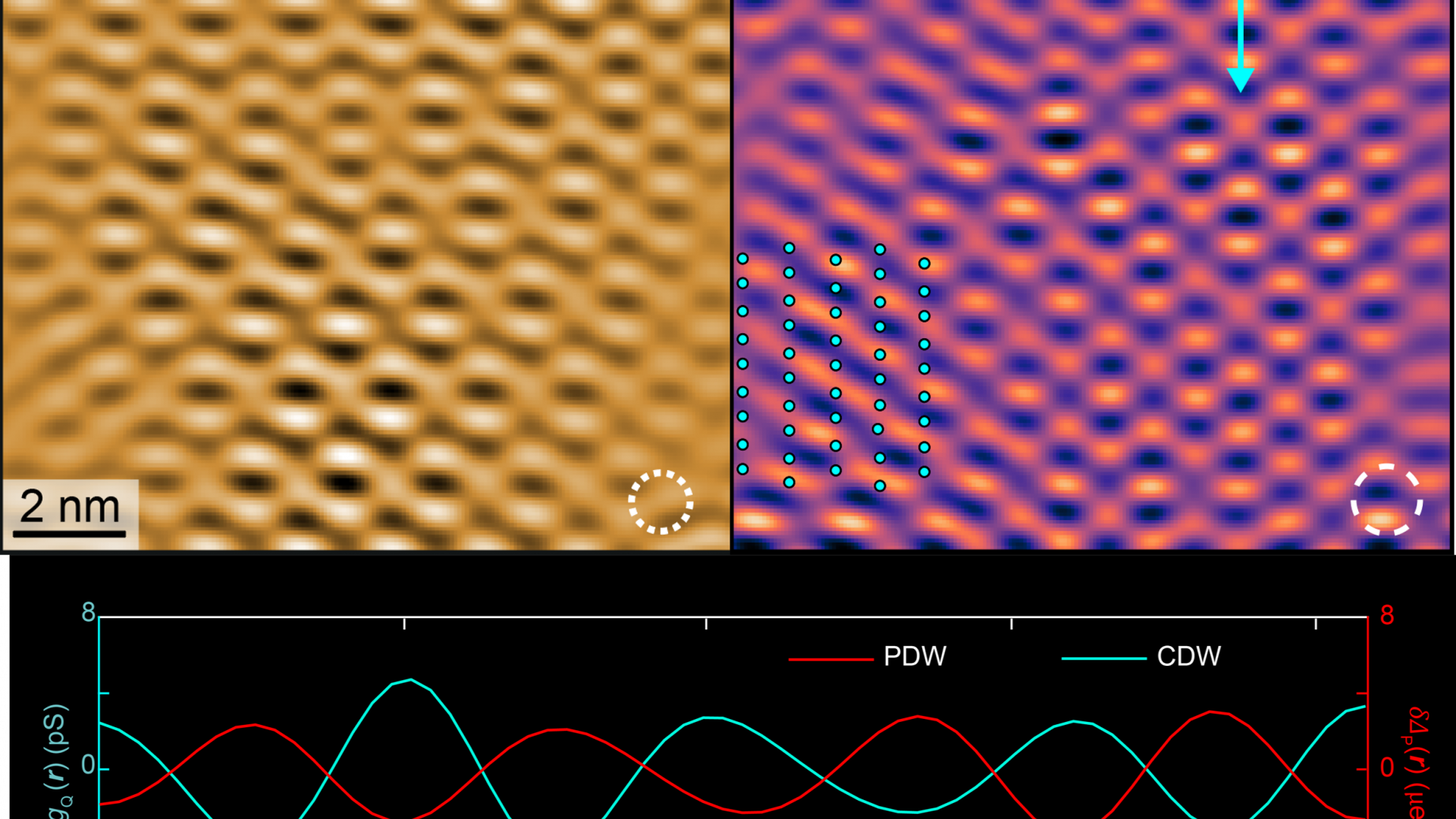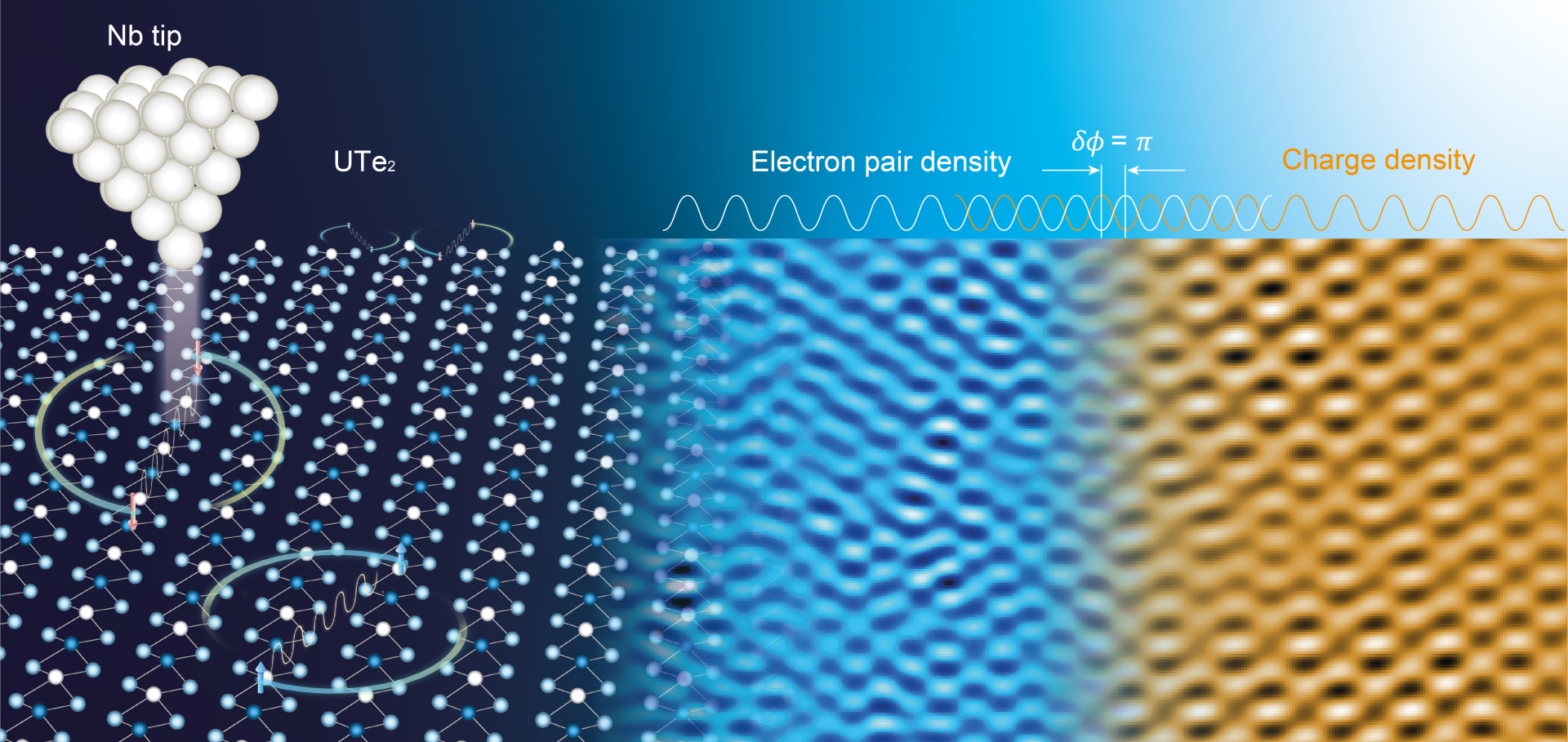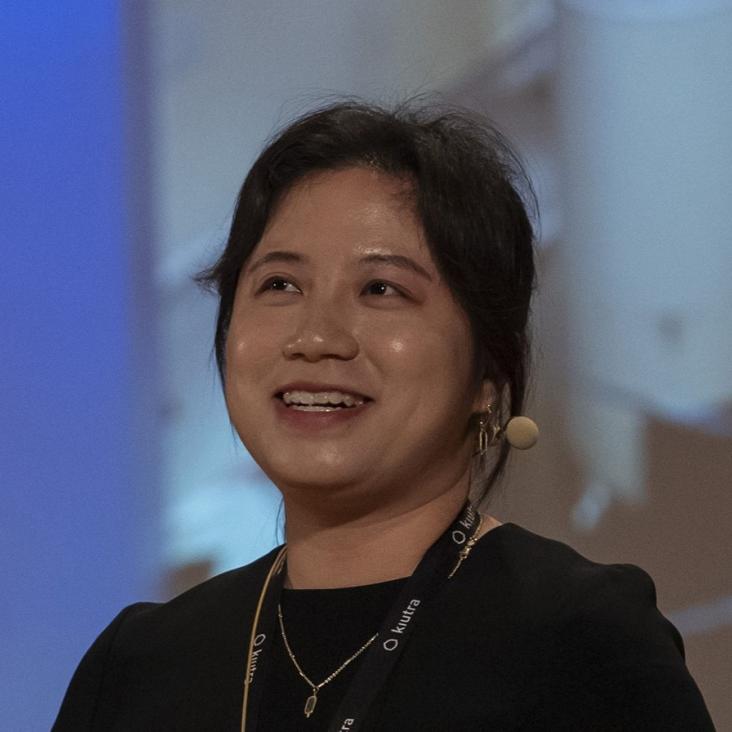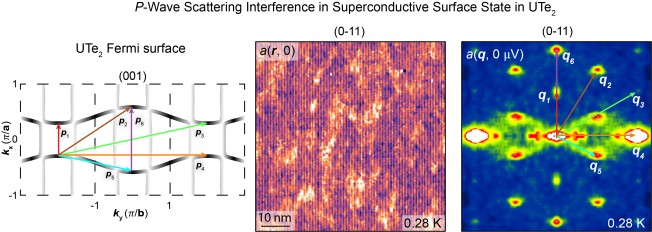Topological Superconductivity
Quasiparticle scattering interference visualization of superconductive surface state in an odd-parity p-wave superconductor UTe2
Although no known material definitely exhibits intrinsic topological superconductivity, where a spin-triplet electron pairing potential has odd-parity, UTe2 is now the leading candidate. Ideally, the parity of superconducting order parameter might be established by using Bogoliubov quasiparticle interference imaging (QPI), a recognized technique for order parameter determination in complex superconductor. However, odd-parity superconductors should support a topological quasiparticle surface band (QSB) on crystal termination surfaces only for energies within the superconductive energy gap. The QPI should then be dominated by the QSB electronic structure and only reveal bulk characteristics excursivly. Here, by using a superconducting scan-tip to achieve bettwe than 10 ueV energy resolution QPI for UTe2 studies, we discover and visualize the in-gap quasiparticle interference patterns of its QSB. Specifically, at the UTe2 (0-11) cleave surface a unique band of Bogoliubov quasiparticles appears only in the superconducting state; QPI visualization then yields a characteristic sextet qi: i = 1-6 of interference wavevectors from which we establish QSB dispersions k(E), and their existence only for energies within the gap within the range of Fermi momenta projected onto the (0-11) crystal surface. Quantitative evaluation of this sextet qi then demonstrates precisely how the QSB is projected from the subtending bulk Fermi surface. Finally, a novel theoretical framework has been developed to predict the QPI signatures of a topological QSB at this (0-11) surface. Its predictions are demonstrably consistent with the experimental results if the bulk order parameter exhibits time-reversal conserving, odd-parity, a-axis nodal, B3u symmetry. Ultimately, these new techniques adumbrate a novel spectroscopic approach to identification of intrinsic topological superconductors and their superconductive topological surface states.
Nature Physics, 21, 1555–1562 (2025).
Press release:
Nature Physics: Topological superconductivity finds its missing piece
Detection of a time reversal symmetry conserving superconductive surface band in a topological superconductor
Although nodal spin-triplet topological superconductivity appears probable in UTe2, its superconductive order-parameter remains unestablished. In theory, a distinctive identifier would be the existence of a superconductive topological surface band (TSB), which could facilitate zero-energy Andreev tunneling to an s-wave superconductor, and also distinguish a chiral from non-chiral order parameter via enhanced s-wave proximity. Here we employ s-wave superconductive scan-tips and detect intense zero-energy Andreev conductance at the UTe2 (0-11) termination surface. Imaging reveals sub-gap quasiparticle scattering interference signatures with a-axis orientation. The observed zero-energy Andreev peak splitting with enhanced s-wave proximity, signifies that the superconducting order parameter of UTe2 is a non-chiral state: B1u, B2u or B3u. However, if the quasiparticle scattering along the a-axis is internodal, then a non-chiral B3u state is the most consistent for UTe2.
Science, 388, 938-944 (2025).
Press release:
Science: Sleuthing out the symmetry of a superconductor
EurekAlert: Quantum visualisation techniques to accelerate the arrival of fault-tolerant quantum computers
Mirage: Quantum Visualization Speeds Up Fault-Tolerant Computers
Scienmag: Quantum Visualization Techniques Propel the Development of Fault-Tolerant Quantum Computers
Journal Club for Condensed Matter Physics: The use of resonant Andreev tunneling via surface state in UTe2 to nail down its pairing symmetry
Detection of a pair density wave state in UTe2
Spin-triplet topological superconductors should exhibit unprecedented electronic properties including fractionalized quantum states relevant to quantum information processing. Although UTe2 may embody bulk topological superconductivity, its superconductive order-parameter remains unknown. Many diverse forms for the order parameters are physically possible in such heavy fermion materials. Moreover, intertwined density waves of spin (SDW), charge (CDW) and pairs (PDW) may interpose, with the latter exhibiting spatially modulatingsuperconductive order-parameter, electron pair density and pairing energy-gap. Hence, the newly discovered CDW state in UTe2 motivates the prospect that a PDW state may exist in this material. To search for a PDW in UTe2, we visualize the pairing energy-gap with ueV-scale energy-resolution using superconductive STM tips. We detect three PDWs, each with peak-peak gap modulations circa 10 ueV and at incommensurate wavevectors Pi: i = 1,2,3 that are indistinguishable from the wavevectors Qi: i = 1,2,3 of the prevenient CDW. Concurrent visualization of the UTe2 superconductive PDWs and the non-superconductive CDWs reveals that every Pi:Qi pair exhibits a relative spatial phase of π. From these observations, and given UTe2 as a spin-triplet superconductor,this PDW state should be a spin-triplet pair density wave. While such states do exist in superfluid 3He, for superconductors they are unprecedented.
Nature 618, 921–927 (2023).
Press release:
Physics World: Topological superconductor harbours unusual crystalline state
Nature News & Views: Widespread pair density waves spark superconductor search
Oxford news: Breakthrough identifies unprecedented state of topological quantum matter

Interplay of PDW and CDW in UTe2



